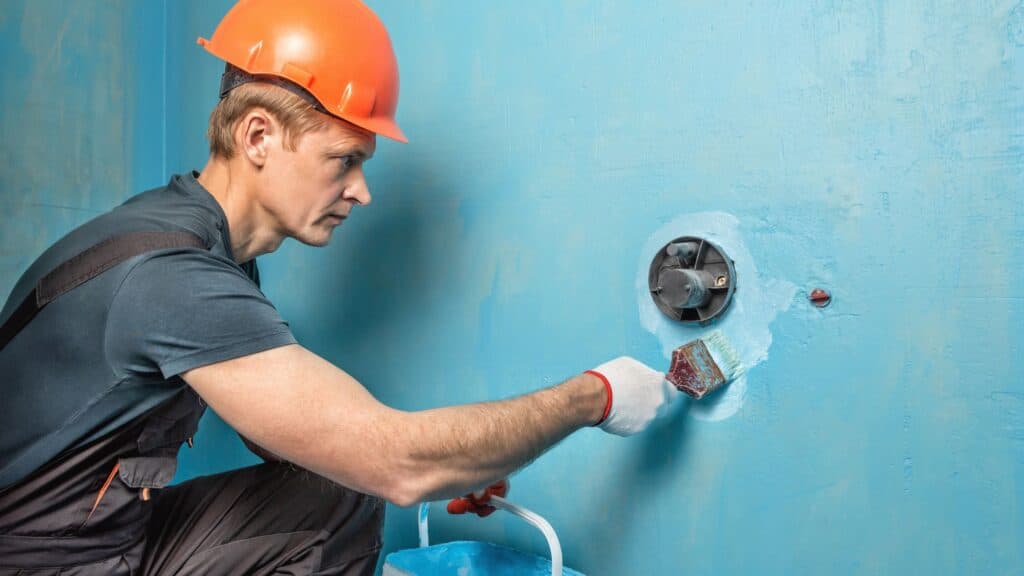We often get asked the question – does insulation paint work? In this article, we’ll discuss what thermal paint insulation is used for, the associated advantages and disadvantages, along with how to use it.
Insulation paint is a water-based heat-reducing product that reflects sunlight. It is a great thermal insulator and waterproofing agent that is widely used in construction, especially on external surfaces such as roofs.
The paint industry is advancing more and more with modern laboratories and new products that offer benefits beyond aesthetics. Thermal paint, for example, has been increasingly used in sustainable architecture projects, as it reduces electricity consumption.
What Is Thermal Paint?
Insulating paints, often known as thermal paints, are ornamental coatings that are specifically developed to increase a surface’s thermal performance. Insulating paints perform differently depending on the situation.
Exterior insulating paint and interior insulating paint are the two most common types of insulating paint. While they both work on the idea of adding insulating characteristics to properties, they do so in distinct ways.
Insulation paint is a water-based heat-reducing product that reflects sunlight. It is a great thermal insulator and waterproofing agent that is widely used in construction, especially on external surfaces such as roofs.
How Does Thermal Paint Work?
It was initially developed by NASA to protect spacecraft structures from overheating, but scientists realized that the material could also be used successfully in civil construction. Its effectiveness is proven by studies and the use of thermal paint insulation is already common in several countries, such as the USA.
It became popular because thermal paint is cheaper and more sustainable than polyurethane foam, a material derived from petroleum used in most thermal insulation works. Thermal paint is indicated for painting tiles, roofs, and walls. It can also be used as a protective paint on containers, cold rooms, and industrial and commercial facilities in general.
Its application on building terraces is very interesting, as the solution manages to provide thermal insulation without the need for other materials that can make the roof heavier. In warmer locations, it helps lower room temperature and reduces the use of air conditioning or other ventilation systems. Given this context, we can say that thermal paint is a sustainable solution, as it generates electricity savings.
Difference Between Insulation Paint and Regular Ink
The common paint, formed by solvent, resin, and pigments, usually has only aesthetic function and has several colors. Thermal paint, on the other hand, has a different composition, as it is made from water and hollow glass microspheres. They prevent the entry and exit of heat, reflecting 80% to 90% of the sun’s rays. In addition, insulation paint is predominantly white.
How To Use Insulation Paint?

Inadequate wall thickness, low-quality materials, poor workmanship by builders, and other factors can result in high humidity, cold bridges, moisture, and mold on the walls of the house’s premises, creating an uncomfortable environment. In such a case, it is obvious that additional insulation of the inside walls is required, but standard insulation is unattractive because it lowers the usable size of the rooms.
Warming with expanded polystyrene is inappropriate since it reduces fire safety and harms health due to its pronounced chemical structure. Furthermore, traditional heaters necessitate additional expenses for supplies and a complex of sophisticated works.
It is considerably easier to work with heat-insulating paint. All that is required beforehand is to remove irregularities and putty gaps on the wall surfaces and then cover them with an acrylic-based primer after they have dried. Many manufacturers make a primer just for their own heat-insulating paint. As a result, the most effective result of heat insulator adherence to the walls is obtained.
Thermal Insulation Paint Coatings
The way to use thermal paint insulation is the same as a common paint and the same materials are used. Regarding the number of coats, it is at the discretion of who is applying, but 3 to 4 are recommended. The drying time between coats varies according to the climate of the region.
In the case of tiles made of galvanized steel, it is important to clean them with steel wool or sandpaper before application to ensure that the thermal paint has better adhesion. One tip is to apply the thermal paint crosswise.
You might also be interested in checking out the paint estimate calculator.
External Insulation Paint – Insulation Paint For Roofs
The thermal paint can be applied to metal roofs, ceramic tiles, fiber cement, or precast concrete.
Insulation Paint For Internal Walls
Achieving good thermal comfort without having to spend electricity is a challenge, isn’t it? There are already many materials that help in this mission – among them is insulation paint. It can be used on external walls and facades to ensure that the sun’s rays are repelled. In addition, this solution is also waterproofing, a great advantage that will reduce moisture on the surface.
Is Thermal Paint Any Good? (Thermal Insulation Paint Advantages)
- It is a good thermal insulator
- It is easy to apply
- Reduces energy consumption
- Has high durability
- Protects the roof from the rust
- It has great value for the money
Thermal Insulation Paint Disadvantages
- Large consumption of material for the formation of a high-quality insulating layer
- High price
- Low fire resistance
